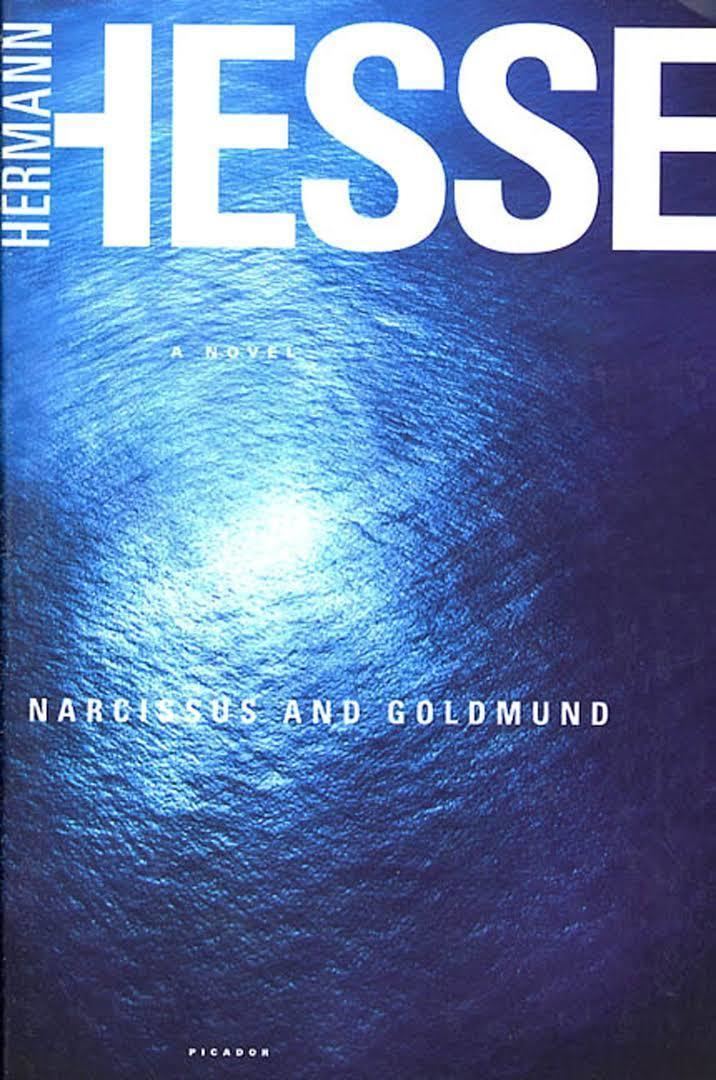8.8 /10 1 Votes8.8
4.7/5 Flipkart Original title Narziß und Goldmund Publication date 1930 | 4.2/5 Goodreads 4.3/5 Barnes & Noble Country Germany Publisher Fischer Verlag Originally published 1930 Page count 320 | |||||||||||||||||||||||||||||||||
 | ||||||||||||||||||||||||||||||||||
Published in English 1932 (Dunlop translation as Death and the Lover); 1968 (Molinaro translation as Narcissus and Goldmund) Genres Historical Fiction, Philosophical fiction Similar Works by Hermann Hesse, Fiction books | ||||||||||||||||||||||||||||||||||
Narcissus and goldmund by hermann hesse
Narcissus and Goldmund (German: Narziß und Goldmund; also published as Death and the Lover) is a novel written by the German–Swiss author Hermann Hesse which was first published in 1930. At its publication, Narcissus and Goldmund was considered Hesse's literary triumph; chronologically, it follows Steppenwolf.
Contents
Synopsis
Narcissus and Goldmund is the story of a young man, Goldmund (pronounced [ˈɡɔlt.mʊnt]), who wanders aimlessly throughout Medieval Germany after leaving a Catholic monastery school in search of what could be described as "the meaning of life," or rather, the meaning of his life.
Narcissus (German: Narziß [ˈnaʁ.ʦɪs]), a gifted young teacher at the cloister school, quickly makes friends with Goldmund, as they are only a few years apart, and Goldmund is naturally bright. Goldmund looks up to Narcissus, and Narcissus has much fondness for him in return. After straying too far in the fields one day, on an errand gathering herbs, Goldmund comes across a beautiful Gypsy woman, who kisses him and invites him to make love. This encounter becomes his epiphany; he now knows he was never meant to be a monk. With Narcissus' help, he leaves the monastery and embarks on a wandering existence.
Goldmund finds he is very attractive to women, and has numerous love affairs. After seeing a particularly beautiful carved Madonna in a church, he feels his own artistic talent awakening and seeks out the master carver, with whom he studies for several years. However, in the end Goldmund refuses an offer of guild membership, preferring the freedom of the road. When the Black Death devastates the region, Goldmund encounters human existence at its ugliest. Finally he is reunited with his friend Narcissus, now an abbot, and the two reflect upon the different paths their lives have taken, contrasting the artist with the thinker.
The timeline and geography of the narrative is left somewhat vague, as the tale is largely metaphorical and makes little attempt at historical accuracy. For example, some of Narcissus and Goldmund's discussions of philosophy and science sound too modern to have taken place during medieval times.
Themes
In this novel the influence of Friedrich Nietzsche's theory of the Apollonian versus Dionysian spirit is evident. The polarization of Narcissus's individualist Apollonian character stands in contrast to the passionate and zealous disposition of Goldmund. Hesse, in the spirit of Nietzsche's The Birth of Tragedy, completes the equation by creating Goldmund as a wanderer (a Dionysian endeavour) balanced out by Narcissus, the structured and stable priest-monk (an Apollonian approach), and highlighting the harmonizing relationship of the main characters.
Goldmund is presented as an evolving seeker who attempts to embody both Apollonian and Dionysian elements, thus capturing Nietzsche's conception of the ideal tragedy. Goldmund comes to embody a wide spectrum of the human experience, lusting for the gruesome ecstasy of the sensual world yet capturing and representing it through his talent as a sculptor.
Like most of Hesse's works, the main theme of this book is the wanderer's struggle to find himself, as well as the Jungian union of polar opposites (Mysterium Coniunctionis). Goldmund represents nature and the "feminine mind", while Narcissus represents science and logic and God and the "masculine mind". These "feminine" and "masculine" qualities are drawn from the Jungian archetypal structure, and is reminiscent of some of his earlier works, especially Demian. Throughout the novel, Goldmund increasingly becomes aware of memories of his own mother, which ultimately results in his desire to return to the Urmutter (primordial mother). However, he also tries to reconcile the Apollonian and Dionysian ideals through art (giving form to the formless).
English translations
The first translation into English, (by Geoffrey Dunlop), appeared in 1932 entitled Death and the Lover. Penguin Modern Classics published this translation in 1971, entitled "Narziss and Goldmund", reprinting in 1971, 1972x2, 1973x2, 1974x2, 1976, 1978. In 1968, a translation by Ursule Molinaro was published as Narcissus and Goldmund. In 1994 a new translation by Leila Vennewitz was shortlisted for the Schlegel-Tieck Prize.
